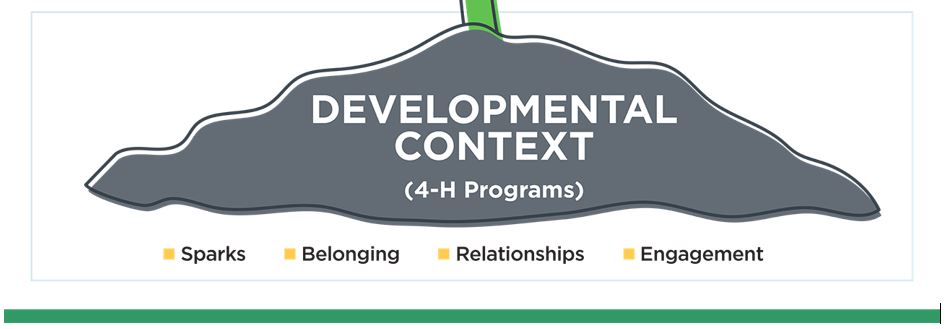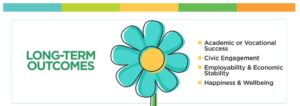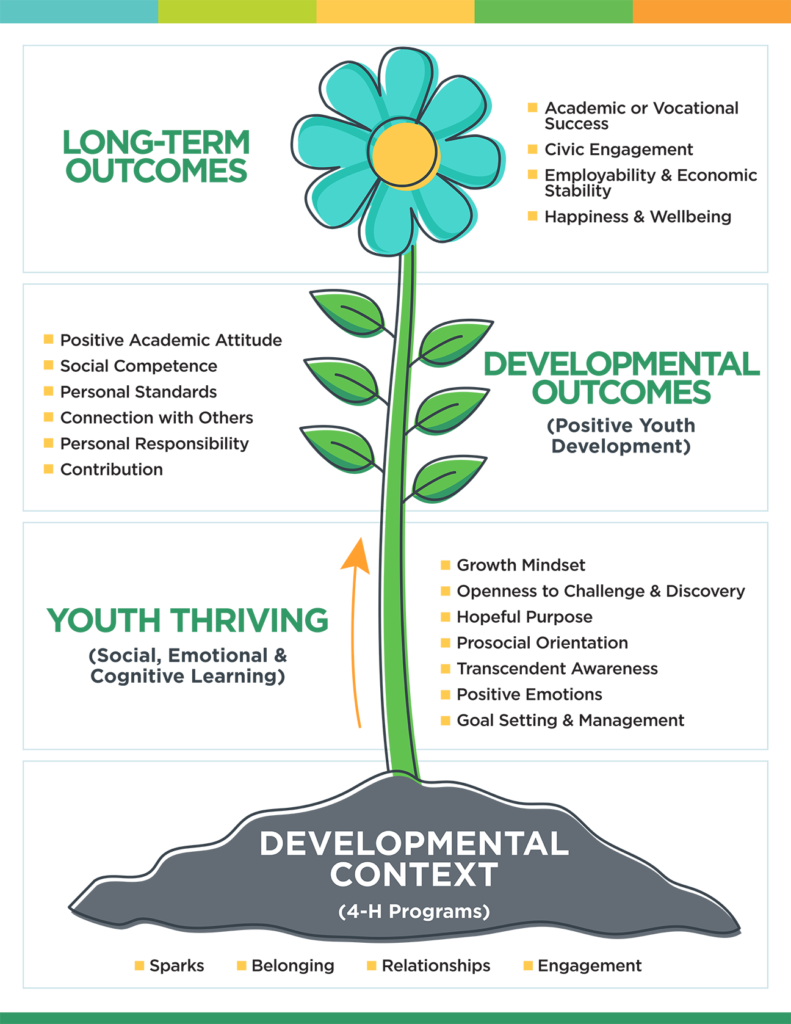Home » Resources » Volunteer Resources » 4-H Foundations » 4-H Thriving Model
4-H Thriving Model
For communicative accommodations in languages other than English, please contact oaic@extension.wisc.edu.
Para pedir adecuaciones para la comunicación en un idioma distinto al inglés, favor de comunicarse con: oaic@extension.wisc.edu.
Predicting the Impact of 4-H on Positive Youth Development
The 4-H Thriving Model is based on research conducted at Oregon State University’s College of Public Health and Human Services. This model predicts that youth who participate in 4-H programs that provide a high-quality developmental context will thrive, and thriving youth achieve key developmental outcomes.
 The 4-H Context
The 4-H Context
4-H is the context—or setting—in which young people grow and thrive. By creating a positive, engaging space and hands-on learning opportunities for youth now, we put in place the building blocks for a strong future. The context is built on three foundational pieces:
- Facilitating Youth Sparks—Providing a place for youth to explore their interests and passions—their sparks!
- Youth Program Quality Principles—Offering programs that follow youth program quality principles with a focus on youth belonging
- Fostering Developmental Relationships—Emphasizing developmental relationships with adults who are caring, challenge growth, and share power
Driving the Thriving

By building the 4-H context on those three crucial building blocks, 4-H supports youth in thriving. Thriving youth:
- Have an intrinsic desire and willingness to try new challenges (Challenge & Discovery)
- Cultivate a growth mindset that emphasizes effort in learning over innate ability (Growth Mindset)
- Believe in a hopeful future and purpose in life (Hopeful Purpose)
- Are connected to something greater than the self that provides meaning and purpose in life and shapes everyday thoughts and action (Transcendent Awareness)
- Demonstrate the pro-social values of respect, honesty, responsibility, empathy and helping (Pro-Social Orientation)
- Are able to express and manage emotions appropriately (Positive Emotionality)
- Set and manage goals, with perseverance toward goal achievement (Goal Management)
The context drives youth to thrive and by thriving, the reach key developmental outcomes.
Developing Outcomes

Youth who thrive because of participating in 4-H…
- Are more likely to be motivated in school and succeed academically
- Interact with others in positive ways
- Set and achieve high personal standards for themselves
- Contribute to their families, communities, and beyond through generosity
- Be active participants in strong personal and community networks
- Take personal responsibility for themselves and the world around them
Long-Term Outcomes

This means that as a result of the work done today to engage young people in quality learning opportunities that interest them with positive adult leaders, role models, and mentors, youth will thrive long into the future. This work, done over a period of many years, through their involvement in 4-H, leads to adults who are more likely to:
- Find success in the profession or vocation of their choice
- Give back to their communities through their time and talents
- Be happy and have a greater personal sense of well-being over time
That makes 4-H a current investment that is worth making for the long-term well-being of every young person.
Putting It All Together
When we put all the pieces together, we know that the efforts of youth leaders, adult volunteers, community members, and educators – together – result in young people who are thriving well into the future.
Additional Resources to Understand 4-H Thriving
The following resources help educators and volunteers understand how to help create that positive, supportive 4-H context today to support youths’ tomorrows.






